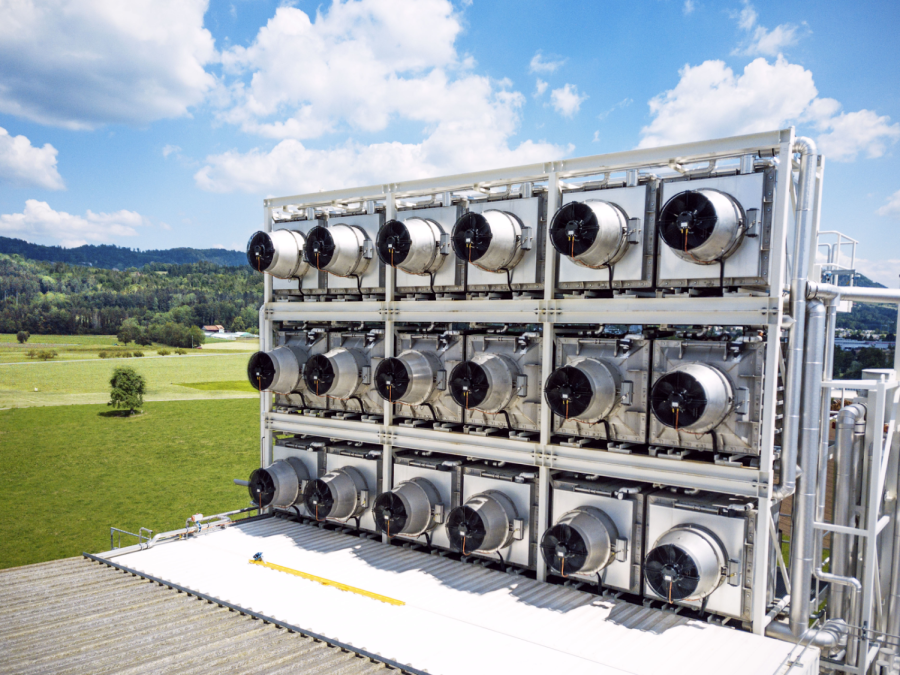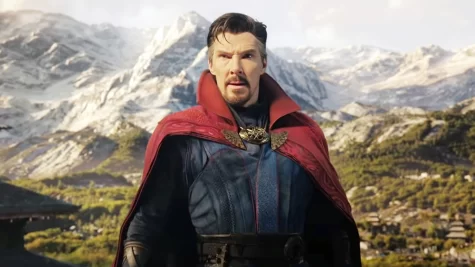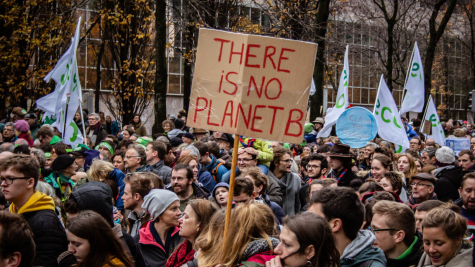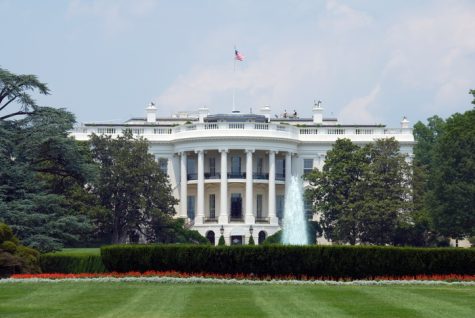Carbon dioxide recovery program options
The climate crisis is never easy to think about. With everyday stressors and focus on current life, the existential dread of a slow-moving extinction is overlooked. According to the United Nations, we have used up over two-thirds of our carbon budget and need to radically reduce our emissions by 2030, or the climate crisis will be potentially impossible to avert. The most discussed solutions to this problem are often renewable energies like wind and solar or regulation like cap-and-trade bills that would limit the coal industry’s emissions while still keeping competition high. But, recently, a new solution has been put forward: Carbon Dioxide Recovery, or CDR. CDR is the idea that we need to remove carbon from our atmosphere and store it in the ground in porous minerals. I think CDR is the most important discovery in climate science to date, and the only thing that can truly save our planet from the carbon crisis.
CDR takes many forms, the most popular of which are Carbon Capture and Storage and Direct Air Capture. CCS refers to the practice of putting filters at the source of carbon emissions, such as smokestacks or car exhaust pipes. Often, CCS is seen as a permanent solution, but in reality keeps coal plants open when we should really be transitioning to DAC, the long-term solution to the climate crisis. If we do not remove carbon dioxide from the atmosphere, we cannot avoid the most disastrous effects of the climate crisis; according to the Intergovernmental Panel on Climate Change, we will need to remove 10 billion tons of carbon by 2050. The pioneer in DAC technology, ClimeWorks, is a Zurich-based company that uses an array of fans to capture high-purity carbon dioxide and store it in minerals underground. These minerals can fully absorb the carbon dioxide in less than two years and store it for hundreds of thousands more, effectively removing it from the carbon cycle. And that is really the aim: removal from the carbon cycle.
Obviously, any new technology will face pushback, and DAC is no exception. However, surprisingly, the opposition to DAC usually does not come from coal companies such as Exxon Mobil or others, but instead from environmentalist groups like GreenPeace. Major arguments include that ‘everyone should stop eating meat,’ ‘we should just switch to renewables’ and that ‘we could just plant trees.’ Each one of these points has flaws.
Fully switching to renewables and a vegetarian or vegan diet within the needed time frame is not just extremely difficult, it is impossible. Regardless of what I or others may want, America and other developed countries will not just stop eating meat overnight, and there is not enough political will, infrastructure support or lobbying money to stop coal companies from producing energy, and switching to solar or wind energy immediately. In short: these two solutions are simply not realistic. While they are technically optimal, we are never achieving either in the time needed to make a real difference.
Often when people mention DAC, others bring up that trees ‘do the same thing.’ After all, do trees not also store carbon? Not really. While trees store carbon, when they decay and die or if they burn down, that carbon is released back into the carbon cycle; it is never removed from the system — just stored elsewhere. DAC completely removes it from the carbon cycle, storing it back in the ground where it cannot enter the atmosphere or hydrospheres again. We need to plant trees, but only planting trees is not a sustainable or effective answer.
So what can we do? The answer is simple: support and invest in DAC. Direct Air Capture is the most effective way of removing carbon from the atmosphere, and there is no other pragmatic way to reduce the amount of carbon already in the atmosphere. Renewables prevent, but they do not cure. DAC is also surprisingly cheap. The UN estimates that we have to remove about 1 billion metric tons of carbon dioxide from the atmosphere by 2025, and at a rate of about $250/metric ton, that would “only” cost around $250 billion. That may seem like a lot, but it is less than half of the U.S. military budget. And if you ask me, that is a small price to pay to save our planet.
The climate crisis is never easy to think about. With everyday stressors and focus on current life, the existential dread of a slow-moving extinction is easily overlooked. According to the United Nations, we have used up over two-thirds of our carbon budget and need to radically reduce our emissions by 2030, or the climate crisis will be potentially impossible to avert. The most discussed solutions to this problem are often renewable energies like wind and solar or regulation like cap-and-trade bills that would limit the coal industry’s emissions while still keeping competition high. But, recently, a new solution has been put forward: Carbon Dioxide Recovery, or CDR. CDR is the idea that we need to remove carbon from our atmosphere and store it in the ground in porous minerals. I think CDR is the most important discovery in climate science to date, and the only thing that can truly save our planet from the carbon crisis.
CDR takes many forms, the most popular of which are Carbon Capture and Storage and Direct Air Capture. CCS refers to the practice of putting filters at the source of carbon emissions, such as smokestacks or car exhaust pipes. Often, CCS is seen as a permanent solution, but in reality keeps coal plants open when we should really be transitioning to DAC, the long-term solution to the climate crisis. CCS should be used as a transitional solution: a way to minimize emissions as we turn to sustainable energy such as wind and solar. A real danger that could arise from overuse of CCS is that companies could be able to convince the public that the climate crisis is “solved,” when in reality nothing has been solved.
If we do not remove carbon dioxide from the atmosphere, we cannot avoid the most disastrous effects of the climate crisis; according to the Intergovernmental Panel on Climate Change, we will need to remove 10 billion tons of carbon by 2050. The pioneer in DAC technology, ClimeWorks, is a Zurich-based company that uses an array of fans to capture high-purity carbon dioxide and store it in minerals underground. These minerals can fully absorb the carbon dioxide in less than two years and store it for hundreds of thousands more, effectively removing it from the carbon cycle. And that is really the aim: removal from the carbon cycle.
Obviously, any new technology will face pushback, and DAC is no exception. However, surprisingly, the opposition to DAC usually does not come from coal companies such as Exxon Mobil or others, but instead from environmentalist groups like GreenPeace. Major arguments include that ‘everyone should stop eating meat,’ ‘we should just switch to renewables’ and that ‘we could just plant trees.’ Each one of these points has flaws.
Fully switching to renewables and a vegetarian or vegan diet within the needed time frame is not just extremely difficult, it is impossible. Regardless of what I or others may want, America and other developed countries will not just stop eating meat overnight, and there is not enough political will, infrastructure support or lobbying money to stop coal companies from producing energy, and switching to solar or wind energy immediately. In short, these two solutions are simply not realistic. While these solutions are technically both optimal, we are never achieving either in the time needed to make a real difference.
Often when people mention DAC, others bring up that trees ‘do the same thing.’ After all, do trees not also store carbon? Not really. While trees store carbon, when they decay and die or if they burn down, that carbon is released back into the carbon cycle; it is never removed from the system — just stored elsewhere. DAC completely removes it from the carbon cycle, storing it back in the ground where it cannot enter the atmosphere or hydrospheres again. We need to plant trees, but only planting trees is not a sustainable or effective answer.
So what can we do? The answer is simple: support and invest in DAC. Direct Air Capture is the most effective way of removing carbon from the atmosphere, and there is no other pragmatic way to reduce the amount of carbon already in the atmosphere. Renewables prevent, but they do not cure. DAC is also surprisingly cheap. The UN estimates that we have to remove about 1 billion metric tons of carbon dioxide from the atmosphere by 2025, and at a rate of about $250 per metric ton, that would “only” cost around $250 billion. That may seem like a lot, but it is less than half of the U.S. military budget. And if you ask me, that is a small price to pay to save our planet.
















